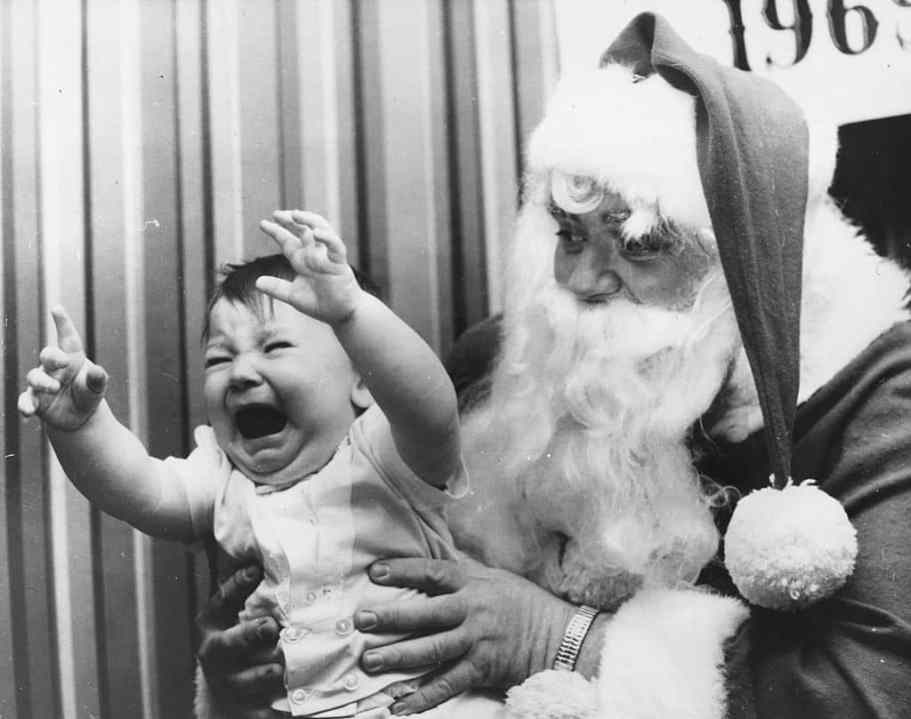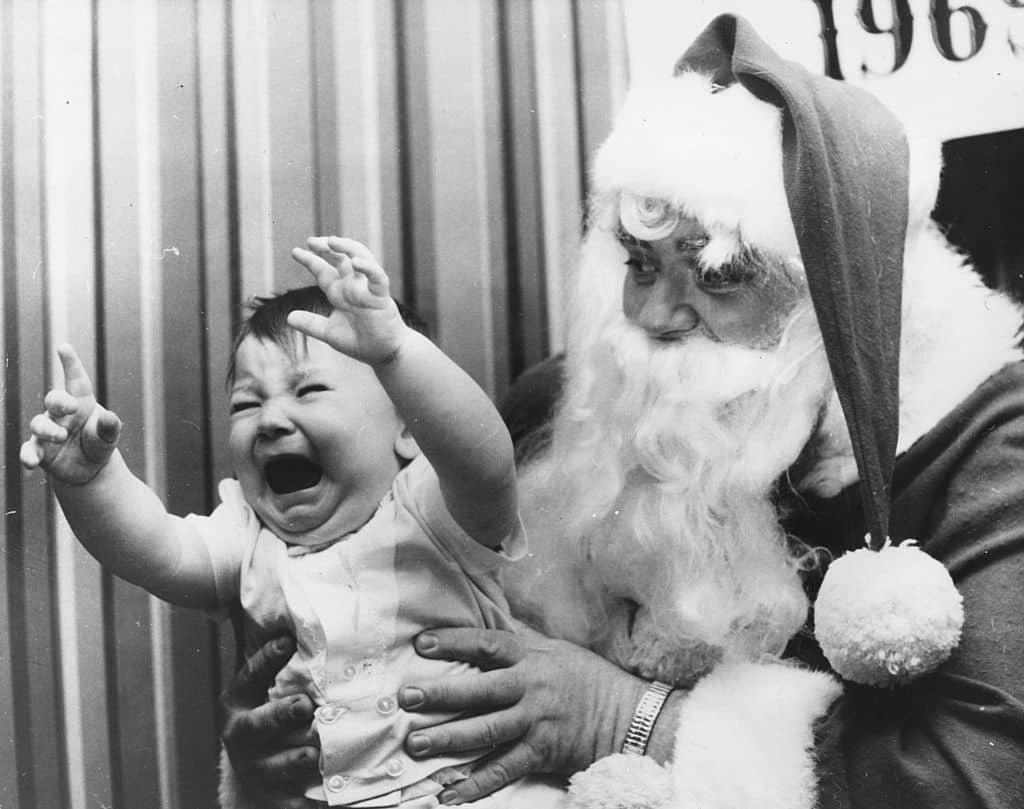I don’t know if you’ve noticed, but the F-word is vanishing. It’s been insidious, but where once perhaps 20 or 30 years ago it was ubiquitous at this time of year, now – well – you can hardly find it. In fact, look carefully, and you’ll see that Father Christmas is disappearing quicker than an ice cap.
That’s because Father Christmas is being supplanted by a stronger, altogether better-resourced foreign invader: Santa Claus. Browse the shelves of Tesco, Morrisons, Asda and yes, my friends, even Waitrose, and you’ll find dozens of ‘Santa’ themed products – but hardly anything associated with Father Christmas. He is being airbrushed out of Christmas, one paper napkin or foiled chocolate facsimile at a time.
And just like another great American cultural export, the Terminator, Santa feels no pity and takes no prisoners. And so we Brits must join together and save Father Christmas from Santa. It’s nothing personal against Saint Nicholas – I’m sure the 4th century bishop of Myra was a charming, devout Christian, and possibly even nice to children – but he’s no Father Christmas.
Father Christmas is the archetypical symbol of festive indulgence
Father Christmas, emblazoned in green or red robes, has been the personification of the Yuletide season in these islands of ours for centuries. He loves to party and wants everyone to join in. ‘Santa’, meanwhile, was imported to America from Holland, where by tradition on his feast day (6 December), ‘Sinterklass’ would give gifts to children – all inspired by the actual Saint Nicholas’s reputation for secret gift-giving.
Since Southern Turkey is hardly renowned for its snows, the whole sleigh-and-chimney caboodle emerged much later from the pen of the American Clement Clarke Moore in his poem of 1823, A Visit from Saint Nicholas, (which kicks off with, ‘T’was the night before Christmas…’). And the modern depiction of a rotund Santa in red with rosy cheeks is credited to Thomas Nast, a German-born American cartoonist, who worked for Harper’s Weekly which circulated his illustrations in the 1880s, who was said to be inspired by German traditional depictions of Saint Nikolaus (His Santa also has holly in his hair and smokes a clay pipe, which, alas, would be frowned upon today).
Thereafter the Coco Cola company, in the first days of mass market advertising, did the rest: in the 1930s it co-opted Santa to flog their pop, swapping the pipe for bottle of Coke, and also did away with the holly in his hair, giving him the matching hat. Crucially, the shade of red that Santa wears has since then appeared to follow the beverage maker’s own branding requirements.
Good old Father Christmas is a rather different kettle of fish.
Dickens gave us his take on the traditional Father Christmas in A Christmas Carol in 1843, personified – so to speak – in the Ghost of Christmas Present (no pun intended, I’m sure). Surrounded by piles of food, Dickens writes: ‘It was clothed in one simple deep green robe, or mantle, bordered in white fur. This garment hung loosely on the figure… its capacious breast was bare, on its head it wore no other covering than a holly wreath set here and there with shining icicles. It’s dark brown curls were long and free: free as its genial face, its sparkling eye, its open hand, its cheery voice, its unconstrained demeanour, and its joyful air.’
This points to Father Christmas’s origins in medieval society as the personification of the season – Old Christmas, Sir Christmas or the Christmas Lord leading one and all in the feasting and merriment. This was the figure whom the Puritans had in mind when they banned Christmas during the Interregnum.
It was only later during the Victorian era that he became a giver of gifts and – arguably – hybridised with St Nicholas.
Is our British Father Christmas perfect? No, he almost certainly drinks more than the recommended weekly limit, and the GP would doubtlessly categorise him as obese – but he is the archetypical symbol of festive indulgence and far closer to the reality of Christmas than Santa, whose name sounds suspiciously like a soft drink.
So this Christmas, make a stand. Boycott the office Secret Santa and do a Furtive Father Christmas instead. Call him by his proper name whenever the children are around. The indigenous embodiment of Christmas has endured for centuries: he survived the Puritans and two world wars; he even survived the homogenising effects of four decades in the European Union (but let’s not go there). So heaven forbid that this be the year when he finally bites the dust.







Comments